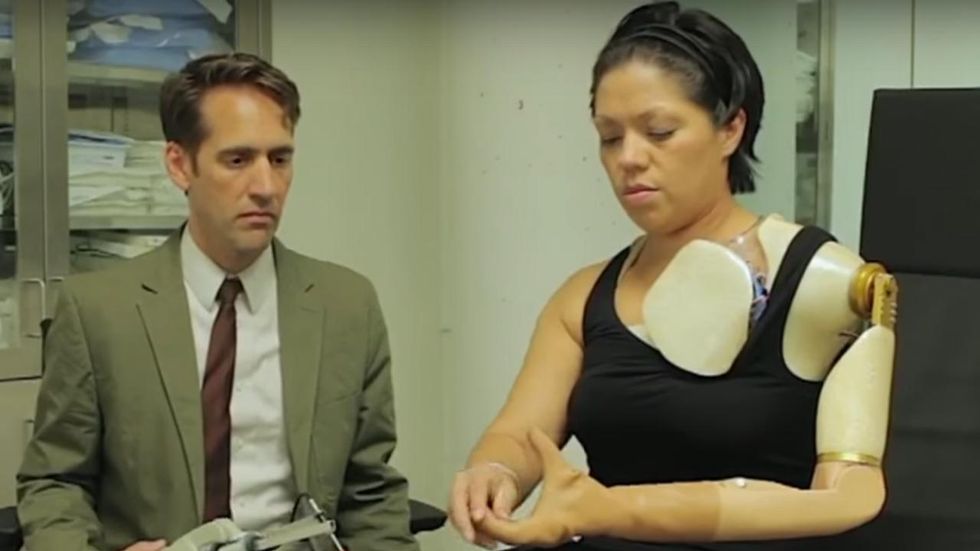
Patient Claudia Mitchell is shown here working with a new prosthetic device that uses new technology to help restore sensation to amputated limbs. The device should also be beneficial to veterans, researchers say. (Image source: YouTube screenshot).

A breakthrough in prosthetic limb technology will likely be welcome news for amputees, including many veterans, WLNY-TV reported.
These new prosthetic devices can restore both movement and sensation, according to the report. Until now, finding ways to restore sensation to amputated limbs has proved to be difficult.
The news report features Claudia Mitchell, an amputee who lost her arm in a motorcycle accident. After her accident, she found the prosthetics on the market to be less than what she hoped for and needed.
“It became a mission almost to be able to give back and to participate in things that were going to bring about change and bring about better prosthetics,” she told the TV station.
That led Mitchell to participate in a research trail by Cleveland Clinic’s Dr. Paul Marasco. During the trial, Mitchell received a prosthetic that “allows her to feel sensation as if it’s coming from her missing hand,” the report stated.
“There’s losses on many levels when you lose a hand,” Marasco said. “Not only do you lose the movement and the ability to grab things but then you lose the ability to feel and to engage with people.”
But Mitchell is one of the first people to have sensory nerves from her arm and hand rewired to muscles in her chest.
“They essentially just unplugged one phone jack and put in another one in here, so now here on my chest, I feel my hand,” Mitchell told WLNY-TV.
The TV station explains how it works:
Her brain then interprets the arm like its her own. When she thinks about moving her hand, the muscles on her chest twitch and send signals to control it. When she holds or touches something, she instantly feels it when the fingertip sensors in her prosthetic is activated.
Mitchell said: “It’s just really simple small things that don’t sound like a big deal, really are,” she said. “When I put on my mascara, and you go to close the lid, you know when you’re done closing the lid because you can feel the tube start to turn and then you’re finished, I didn’t know that before, well now I can feel that.”
Initially, Mitchell simply wanted a better arm. But her participation in the research project led her to help injured U.S. Marines.
Researchers are also developing more ways to help amputees redevelop their sense of touch, the report states.